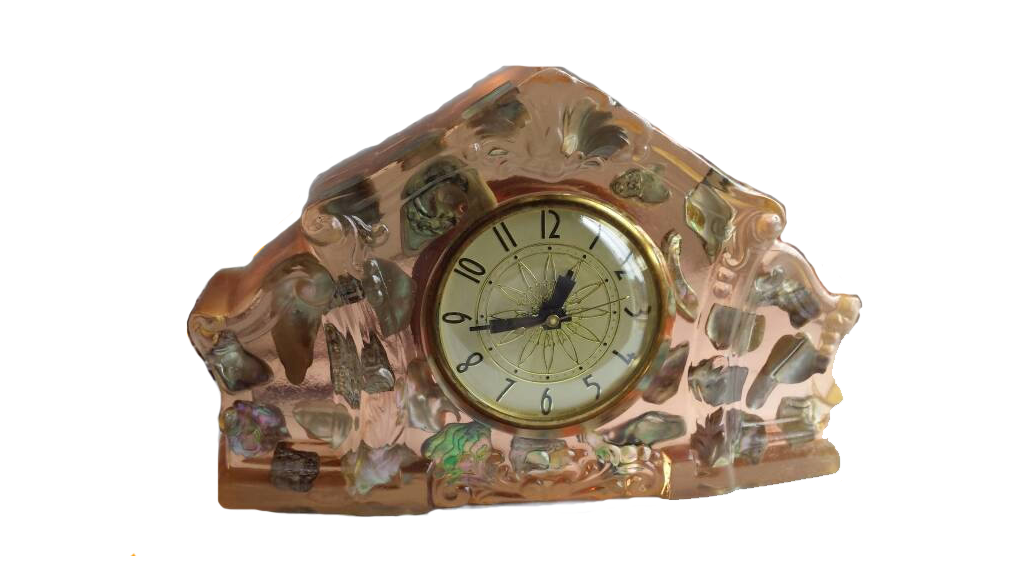Orgone resin, unlike lucite, has a long and complicated origin story. Get ready for a wild ride.
In the 1930s, an Austrian doctor of medicine and a psychoanalyst named Wilhelm Reich discovered–supposedly–an “all-permeating cosmic life force” that he called orgone. His mentor was Sigmund Freud, and he discovered this energy when he was looking for a biophysical manifestation of the Freudian libido. Reich conducted experiments on what he dubbed “orgone energy” in a research facility located in Rangeley, Maine, which is a museum today–the Wilhelm Reich Museum.
How Reich Discovered Orgone Resin
While using a galvanometer, which is “an electromechanical instrument used for detecting and indicating an electric current,” Reich discovered that our skin has an electrical charge while we are experiencing a pleasant situation. He called this charge “bioelectric energy.” He then found energy vesicles that he called bions–which are basically tiny sacs of energy–and these vesicles released radiation that charged surrounding objects. He realized this radiation was the same as the bioelectric energy he found earlier, and he then named this biological energy “orgone”. Reich named this property orgone for “org-” as in excitement and “-one” like the ozone.
Reich found that orgone could be manipulated using layers of metal, like iron sheets, and organic material, like wood and cotton. He also created “orgone energy accumulators” that resemble small walk-in closets. By walking into the energy accumulator, he claimed that a person can soak up high doses of orgone in order to receive its therapeutic and medicinal benefits. Some of the results were supposedly successful at treating acute and chronic conditions, however the American Cancer Society did research and determined that orgone is not a cure for cancer.

Orgone Energy Accumulator, Source: Wikipedia
Reich Versus the Clouds & the FDA
Reich turned out to be a bit fanatical, and he connected pipes to his orgone accumulators to shoot orgone at clouds in New England and Arizona in hopes of relieving droughts and making deserts green. He ended up in jail after the Food and Drug Administration announced that his orgone energy accumulators were a medical fraud.
How This Whole Orgone Thing Relates to Resin: Orgonite
Then, in 1991, an Austrian named Karl Hans Welz adapted Reich’s invention and added polyester resin to the mix of metal particles, which he then named orgonite. Orgonite is a 50-50 mix of resin and metal shavings. The organic material (resin) and the inorganic material (metal) are constantly attracting and repelling energy, and with the addition of a quartz crystal, it is said by some to give off a charge when put under pressure. The resin squeezes the quartz crystal inside which creates a piezoelectric effect. According to Wikipedia, “Piezoelectricity is the electric charge that accumulates in certain solid materials (such as crystals, certain ceramics, and biological matter such as bone, DNA and various proteins) in response to applied mechanical stress.” The Piezoelectric effect is a well-known scientific concept that states certain materials can generate an electric charge when put under mechanical stress. This helps the orgonite function better as a positive energy generator.

Source: 7th Sense Psychics

Source: resinAce
How Orgone Resin is Used Today
Nowadays, orgone is most popularly marketed and sold in the form of orgone pyramids or jewelry. It is also known as chi, prana, or ether, which are all names for our life force energy.
Orgonite sometimes has healing crystals or quartz inside in addition to the metal shavings and resin, and it is thought by some to transform negative energy into positive energy.
Regardless of your belief about the properties of Orgone Resin and Orgonite, it certainly has an interesting history!

